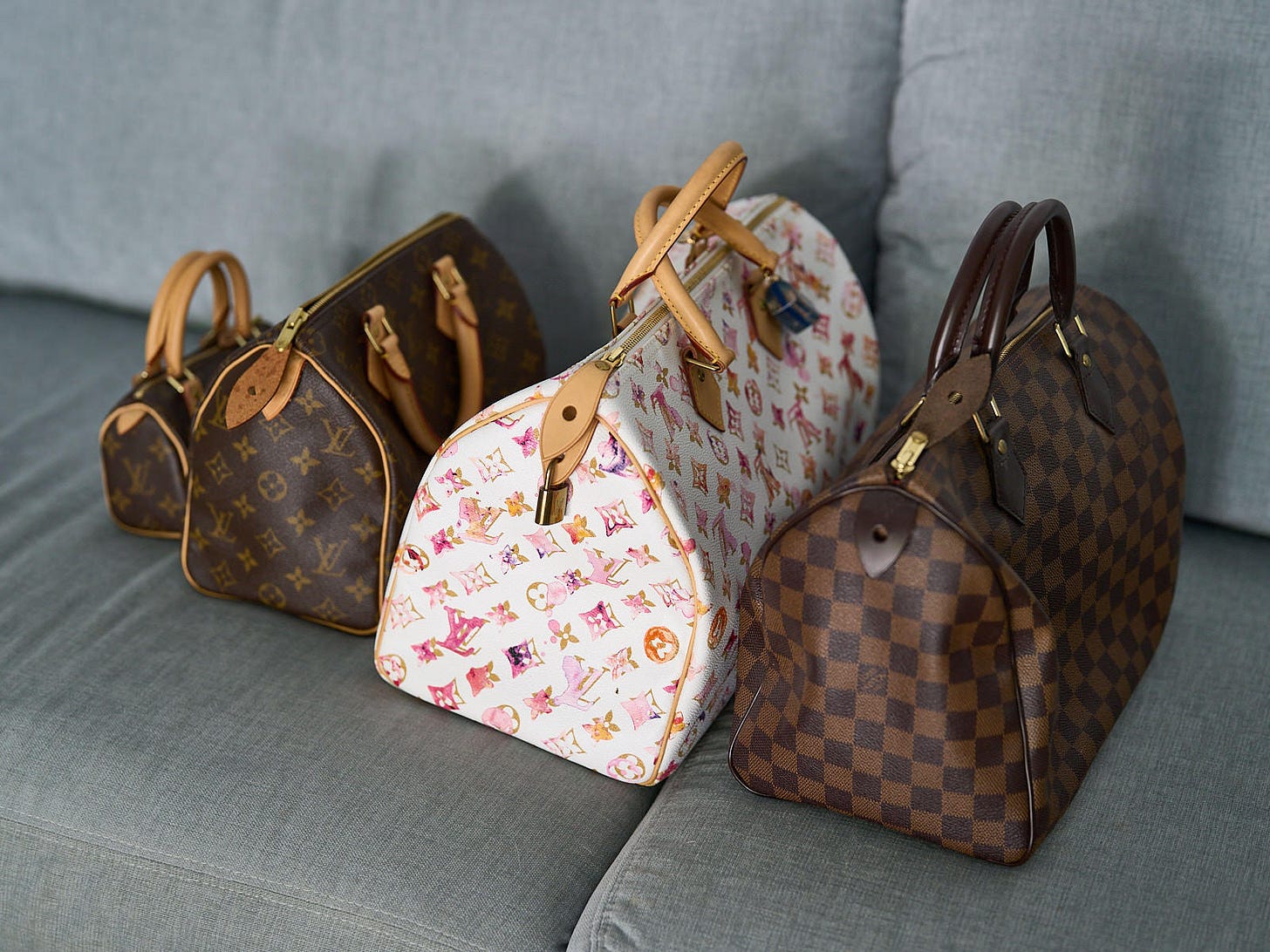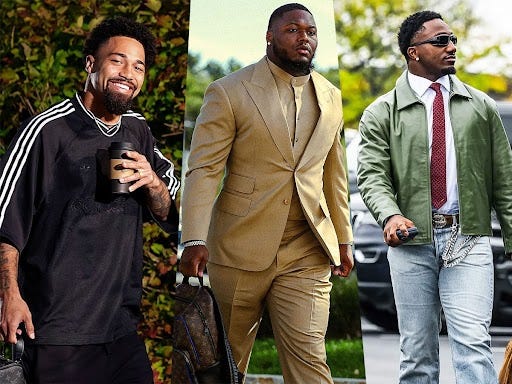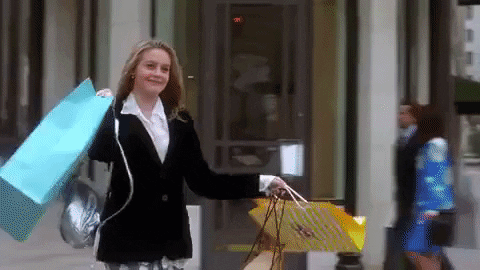With bags that have been around for a while, like classic Chanel or Louis Vuitton pieces, it’s easy to notice prices going up because we have previous numbers for comparison. That’s why prices on those bags go up relatively rarely—raising them is an easy way to irritate existing customers. Those increases aren’t the only way that general price levels in the luxury bag market creep up, though — new designs help pave the way for overall increased price levels, and it seems like way more marquee bags than usual in the past few seasons are arriving with prices creeping toward $3,000. This is insanity, and it’s got to stop. Although it probably never will.
When I was first interested in designer bags, a little over a decade ago, marquee designs like the Balenciaga City Bag and Chloé Paddington retailed from $1,100 to $1,400. The most expensive of the super-popular pieces of the era (at least that I remember) was the Fendi Spy, which was around $2,000 in full leather. That was in 2006 or so, and adjusted for the general rate of inflation, the $1,400ish Paddington would cost around $1,739 today. I cannot prove it (sadly, I have yet to gain the ability to fully inhabit an alternate handbag universe of my own design in order to test my personal theories), but if it debuted for Fall 2018, I am fairly certain any bag like the Paddington would cost at least $2,500. The question of why is a complicated one, and its reasons go far beyond increases in the price of wholesale leather in that time.
First, there are price-tier leaders like Chanel and Hermès, whose broad, dedicated, ultra-rich client base enables them to charge more or less whatever they feel like for their handbags. When Chanel’s famous flap bags will set you back at least four or five grand (and let’s not even talk about Hermès), that gives other brands the cover they need to charge ever-higher prices, especially on debut designs they’ve positioned as the Next Big Thing, without being out of step with the market at large. Lately, it’s hard to find any leather day bag at all for less than $3,000 at Chanel, and that seems to have emboldened the brands that want to compete with them to approach that number as well.
What might be more important, though, is how the fashion industry (and the world, too) has changed since the mid-2000s. As wealth accumulates at the top, the concept of price becomes more flimsy and meaningless to those who have the most money to spend. What’s the difference between $2,000 and $3,000 to multimillionaires? And almost all brands still make what they now consider entry-level designer bags, which are in the $1,000 to $1,500 price range, so they’re still capturing sales at lower price points.
So why not max out?
At a certain price level, shoppers — even those with plenty of money — are going to wonder if they’re getting the level of history, status and prestige from a particular bag that they could be getting if they spent just a little more elsewhere. After all, let’s be real; there are a lot of opportunities to buy a perfectly nice satchel or saddle bag, so brand perception matters in these decisions. And once shoppers start thinking the value might not be there, brands have already lost them — a $2,000 bag isn’t a good value, exactly, but it can feel like that when it’s well-designed and well-made, but still significantly less expensive than the market’s most luxurious players. It makes a lot of buyers feel a little better about splurging to know that what they’ve bought is priced fairly, even just within the context of the top-tier luxury market. If the price part of the equation falters, it changes how shoppers think about a brand, and the perception that a designer is overpriced can alienate consumers for years.
[carousel]
It seems like this has already started happening with some designer brands, who debut bag after bag and don’t get a ton of consumer traction and don’t seem to understand why. Brands like Chanel, Dior and Hermès can charge what they do because they’ve spent decades building a case for why they’re the best in the world, which works not only to increase the perceived value of their bags on a quality level, but also on a prestige level — part of the price of carrying a Chanel bag is the opportunity to be seen carrying a Chanel bag. Casting Bella Hadid or Kendall Jenner in an ad campaign doesn’t affect this problem at all for brands that have a harder time building this case for consumers, but it seems to be the main way many of them are trying to combat it. Usually, this tactic suggests they don’t understand what they’re trying to do in the first place.
In particular, many of the brands who seem to struggle with middling interest in their very expensive bags are primarily known for their clothing, and they don’t seem to understand that the audience for designer bags is different — and far broader — and needs to be approached separately. Having convinced a small number of people to pay $3,000 for a cocktail dress doesn’t make a huge difference in whether or not an accessories lover thinks your bag is worth the same price, especially when designers abound who put those shoppers’ needs and interests first. More and more, though, it seems like brands who have long done pretty well in accessories are also falling into this trap, which is why you may have noticed some of them fading from the conversation as the handbag market evolves to provide more (and better) contemporary and mid-priced options.
The logical conclusion to all of this would be for brands to be realistic about their spots in the market and, instead of trying to play catchup with designers that are just inherently different, find their own places to shine, which may very well be at non-maximum price levels. I doubt any brands will be willing to admit this to themselves, though — after all, have you ever noticed one doing anything but raising prices? If designers need a case study, though, they should look to Chloé, which has a wonderful reputation for luxury and has largely kept its day bag debuts at $2,000 or lower, even while everyone around it races toward $3,000. These bags have helped Chloé maintain constant popularity among fashionable women across a range of ages, even though plenty of luxury marketers seem to believe the only way to compete is to convince consumers that any random bag has to cost $3,000. It doesn’t have to be this way, and it would be better for all consumers and most brands if everyone in the bag game just chilled out a little bit.
















Great points. This is why I’m moving away from the brands with OTT and unjustified prices. Carolina Herrera is now my go-to brand. Great quality, good design and prices not in the stratosphere.
I bought 2 Victoria Beckham bags last year and surprisingly now they are my absolute go to bag. I think they are quite good in quality and price a bit less than those premium French/Italian designers.
I don’t care about resale and staying power because I carry what I love and fit my life style and enjoy the exclusive feeling that I am the only one carrying these bags in my peers 🙂
Great article, so on point!! I remember the day when €1500 would get you a great back, nowadays €1500 gets you a camera bag!! This is really getting ridiculous!!! Even though we all are bag aficionados, in the end, what justifies 5k for a bag…it’s…well…a bag! Chanel drives me nuts with their never ending price increases, all that while the quality is going down the drain… I now carefully choose what bag I want to purchase and have been gearing more and more towards up and coming brands. In the end, as long as there will be people buying bags no matter the price, why would they stop increasing the price, right?!
I don’t understand why quality has decreased while prices have skyrocketed.
Great article. Demand is so high to be on trend designers keep raising the price. The companies know what they are doing including Gucci. You have celebrities wearing everything from clothes to bags (i.e. Fendi and Gucci) that they no longer are trying to appeal to the professional every day people. I love buying bags but I can’t afford $3000 every time a new bag comes out. I called my Givenchy bag a splurge at $1900. Now that’s called a starter bag.
What I don’t get is people spending thousands only to purchase something every other person has — the black Chanel flap, the Neverfull, the Speedy, the Birkin. Also Cartier Love bracelets and Van Cleef Alhambra jewelry. These are very expensive bandwagons to jump on. I would rather spend it on something unique and special.
Such a great article! Although LV have some bags that retail for about $1300 like speedy or Neverfull, I don’t want them. Why would I want to spend so much on a bag that has been around for decades, become very common, seen on numerous people everyday, made of canvas and has so many replica copies being sold. Any new canvas monogram designs retail for so much higher close to $3000 and up
Love everything about this post. Thank you!!
Amanda, love everything about this post. Thank you!!
Such a great article! It’s been insane how much prices have gone up in the last few years. I love bags, but at a certain point I’m not going to be able to afford or justify buying them. The fear of the price increase has motivated me to buy the Gucci Soho Disco bag once I saw it had jumped up in price, but I was annoyed that it was so much more than it had been a few months before.
Couldn’t agree more!
THANK YOU! I fell in love with designer bags at the age of 15 (didn’t own one until 21 or so). In 2005 (roughly) the Chanel double flap was $2,400. I remember planning to save and buy one. Personally, I choose not to spend over $2,500 on my bags. It’s a way of keeping my tastes in line with the reality of what I can spend. While I understand the idea of exclusivity, I truly don’t understand why handbag prices are absurdly high these days. It’s too bad that they make owning a piece like this so much of a sacrifice for people like me-I’m a true aficionado and see handbags as art. You were quite right about the different market in designer accessories vs clothing. I buy J Crew clothing and LV bags…I have to choose. I’d rather have an accessory that’ll last decades and I don’t have to be a certain size to wear it! Also, when a bag costs so damn much, I become truly afraid to carry it. It’s too big a commitment of money and I don’t want to ruin it. How sad is that?! If they were more moderately priced, I would use them and love them as I should.
I think Longchamp has been really smart about things and not even attempted to be a premium brand when it comes to pricing. Even their premium lines – although higher priced than other Longchamp lines – have stayed within reason. There is very little air in their prices and the CS is just amazing. Makes you more willing to pay.
There are too many brands that have hiked up their prices but forgotten that you can’t expect for customers to be willing to pay absurd prices if the quality hasn’t been hiked up along with the pricing. A sad case in point has been Mulberry, but there are also so many other wannabe super luxury brands that seem to have gotten a little too trigger happy with the prices and buyers are taking their money elsewhere.
This is also a very necessary piece of evolution; without getting rid of old and dysfunctional, there can’t be space for newer, better and more functioning relationships.
I really loved this article and couldn’t agree more. Although I understand your point about Dior being historically top tier, I think it’s slowly starting to lose it’s position and has been for a little while. Dior had a flamboyant and amazing time during the John Galliano reign but ever since, the brand has started to become less and less ‘worth it’ it seems, and still tries to charge some very high end prices when I truly really don’t believe the quality is there, let alone some of the designs they just look tacky in my opinion. And I find this with a lot of high end brands these days – they’re in such a rush to get 4 seasons worth of bags out on the market and raise their prices with each release that they’re completely missing the whole point… the design and quality, I feel it’s so hard to find some really good unique designs these days let alone the mediocre quality. I think this ‘price equals high end luxury’ strategy will collapse on itself for many designers, as i simply don’t believe many of them can justify the prices their charging based on their designs and the quality of them, I think many people will start to wake up to this idea too. Unfortunately consumerism is far too great in these current years and it’s affecting the experience for many bag lovers. I think the strategy of many of the luxury brands these days with ‘price over anything’ is even ruining the whole brand experience for many people, and it isn’t about not being able to afford some of these bags ( I know a few people would be able to) … it’s about having more sense than money and refusing to buy a bag which costs $3k but in essence is worth so little less, based on materials, shopping experience, design, etc. It’s just getting a little sad, as I know a lot of people out there like me, love well-designed high-end bags.
Branding is powerful and lucrative. Not even Kate Spade the person, moonlighting as Frances Valentine, could compete with Kate Spade the brand.
Perhaps these ridiculous price increases will create more discerning buyers. Poor quality/high priced bags appeal to those who want the status of the label, or are chasing the trends.
I like the MaxMara Whitney because it has no logo on the outside, is well-made, functional, and beautiful.
http://a-woman-of-a-certain-age.com/
I actually think that the luxury handbag market is tailored very much to certain Asian markets, where there is more “conspicuous consumption” than in many American markets. I’d bet if we could see the numbers, we’d see that these companies make most of their money on the Asian markets. In the Bay Area where I live, most wealthy tech people (many of whom are retired with millions in the bank) wear hoodies and jeans and most of the fancy stores are filled with International tourists. I think there are definitely some American markets where luxury goods do well but I don’t think this is where these fashion houses are making most of their profits.
Couldn’t agree more with this article. I, myself, have repeatedly fall in love with some bags and refused to buy them as their price was almost the same as a classic Chanel bag (that I pretend to buy one day, as I know I would wear it for the rest of my life). Instead I’ve bought a LV Alma PM Damier, a Gucci Soho and recently a Chloé Nile, which in my opinion have much more reasonable prices.